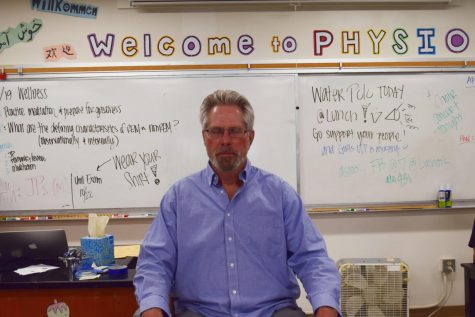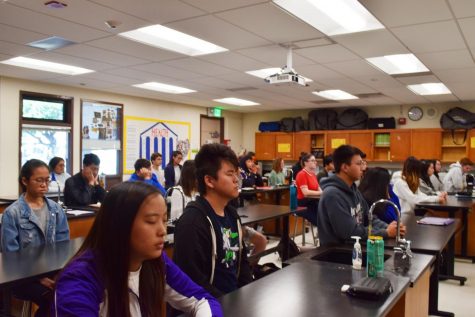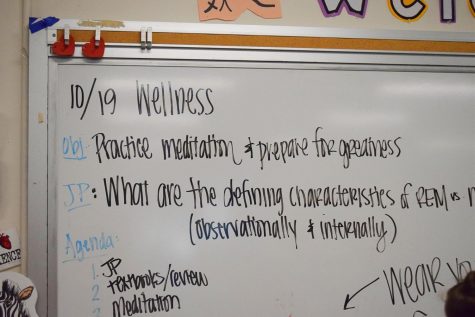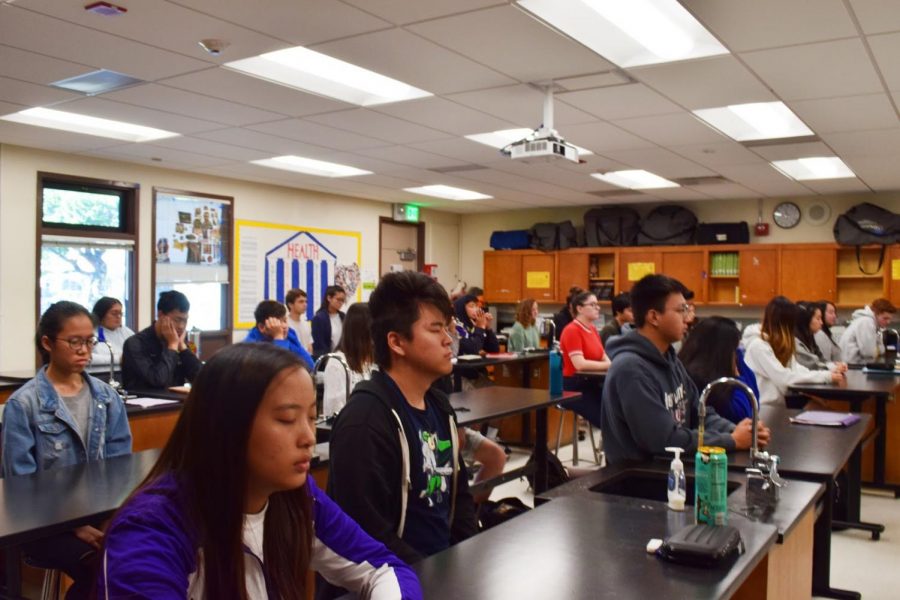Meditation in the classroom
Physiology program incorporates meditation into curriculum
October 22, 2018
Meditation is often associated with a sense of peace, accompanied by the image of a levitating figure with their legs crossed and index finger and thumb gently touching. When placed in the context of a stereotypically obnoxious high school classroom, there is an evident clash.

Yet for the past 16 years, student advocate Richard Prinz has recommended meditation as a simple way to destress, first by introducing it to the MVHS teaching staff the night of Sept. 11, then by offering sessions during each tutorial. It’s also become a regular facet of Physiology class, where students study the significance of meditation while learning about its connection to the curriculum.
“We’re doing school but in a different way,” Physiology teacher Jenna Smith said. “It all relates back to [Physiology], but at the same time it’s a chance to just get outside the box that we’re kind of typically stuck in.”
While there are many different types of meditation, the primary lesson during these in-class sessions is a focus on one’s breath. Prinz talks about the advantages of breathing properly, noting that the simple action has significant ties to one’s well-being, before asking the students to relax and demonstrating proper posture at his seat in the front of the classroom.

“There’s all these physical and psychological benefits that Western science is not studying because meditation mostly comes from Eastern cultures,” Prinz said. “The longer idea is that it’s not just for some temporary relief of stress, but to incorporate in your life so that you’re mindful of what’s going on with your body and your life.”
He hopes that he can help students understand that they must allow themselves to be vulnerable and open to change within themselves in order to facilitate a greater change in their communities.
Senior Debbie Ho adds that these activities serve as a reminder that meditation can be a solid way to destress and feel refreshed. Despite students being busy with schoolwork and extracurriculars, she acknowledges that it’s important to realize that one’s well-being is most important.
“[Mr. Prinz] just [said] that because there’s so much clutter in our lives, we’re always busy, and our brains are thinking a lot,” Ho said. “It’s good once in a while to just be more aware of yourself.”
Regarding wellness activities every Friday, Smith wants to emphasize student involvement over lectures. In addition to having “Meditation Fridays,” she asks students to present an activity to teach the class in terms of its physiological impact.

“It’s fascinating because it gives kids a chance to … own something that they do for their own wellness and figure out really what is it doing for them and physiologically why, and it gives them an opportunity to lead their peers,” Smith said. “It’s not just an experience of the activity but it’s an experience of leadership and it’s connecting it all back to this class.”
Prinz acknowledges that meditation is not easy, especially with misconceptions about the dedication and concentration it requires. To address possible frustration, he reiterates that meditation requires the same kind of diligent practice as any sport.
“You build up this muscle of metacognition in your brain because when you’re sitting and watching your breath, thoughts and feelings, sensations in the body come up,” Prinz said. “And so it gives you a chance to observe them without just being caught up in them. And you having that perspective from awareness allows you to see just what they’re doing to you.”


















